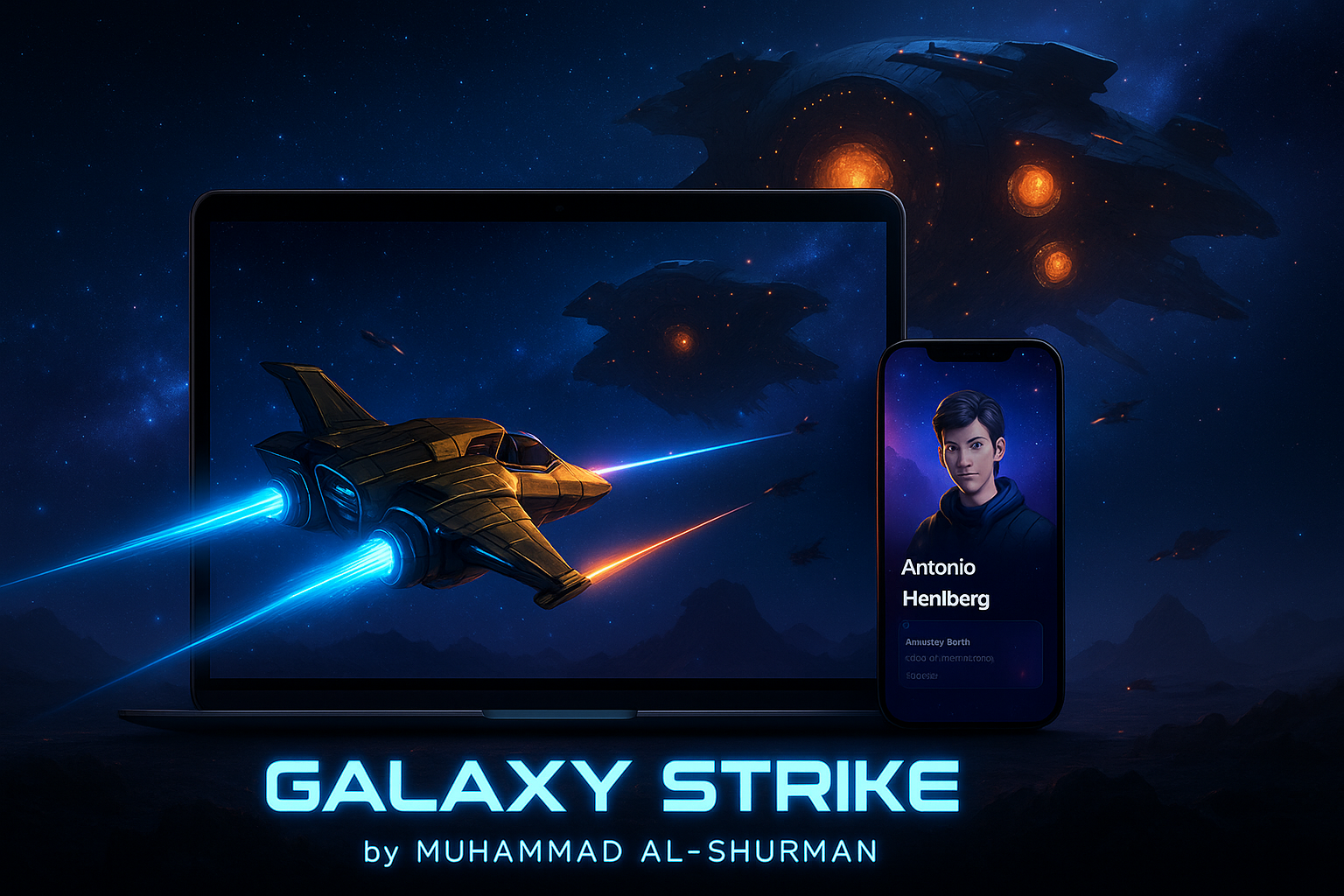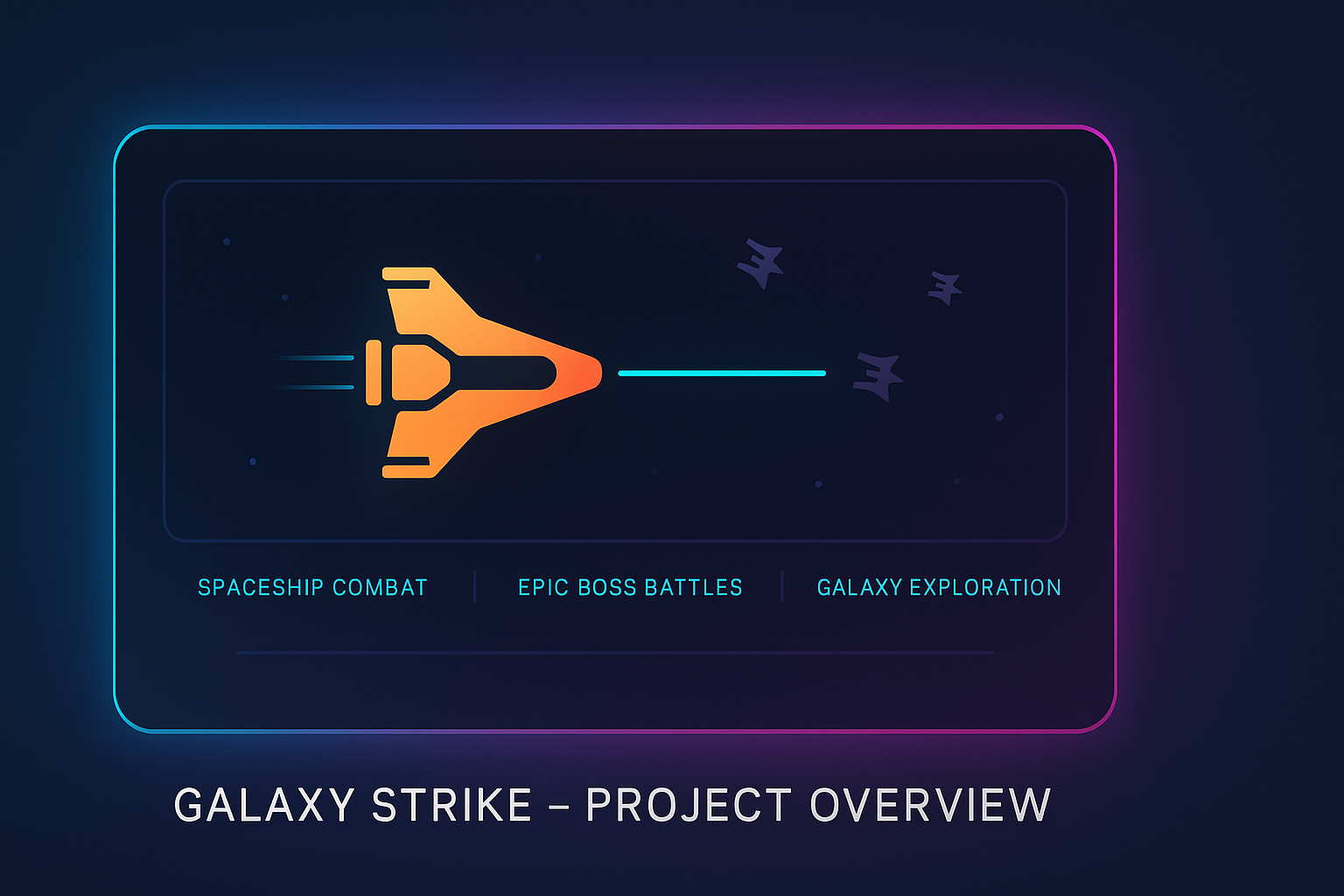Independent Project
February 2025
Galaxy Strike — Unity 3D Space Shooter
Expertise
Gameplay Engineering, AI & Systems, Level Design
Platforms
Windows (Standalone), WebGL (Playable)
Deliverables
- Terrain & world art
Links
View on LinkedIn
Project Overview
Galaxy Strike is a Unity-built space shooter focused on smooth flight controls, readable combat, and a content pipeline that scales. Hand-authored terrain and set pieces frame fast dogfights; each level introduces new patterns and tuned enemy behaviors. Building the project strengthened my C# fundamentals and hands-on understanding of gameplay systems and balance.
Core loop: navigate hostile sectors, outfly waves, land precise shots with a particle-based laser, and push for higher scores while unlocking tougher routes.

Execution
Systems & implementation
- Flight controller: Rigidbody thrust/torque with roll/yaw limits via
Mathf.Clamp(); fixed timestep input to keep handling predictable. Cinemachine camera with subtle follow offsets and FOV kicks. - Terrain & world: authored terrain using Unity terrain tools (height/paint/trees) plus modular space structures; spline-guided lanes for set-piece runs.
- Combat: particle-driven laser with hit registration (raycast+trigger hybrid), damage falloff, and on-hit VFX. Object pooling to avoid GC spikes under heavy fire.
- Animation: timelines & animation curves for fly-ins, enemy beats, boss reveals, and synchronized audio stingers.
- AI & spawning: lightweight state machines (patrol/chase/strafe/evade), wave composer with seeded randomness, and difficulty ramps per sector.
- Prefab pipeline: nested prefabs & variants; ScriptableObjects for ship stats, enemy archetypes, and level configs. Addressables for content delivery.
- UI & audio: scoreboard/HUD, damage indicators, pause/settings; AudioMixer buses, timeline-cued music, and a music singleton.
- Game state: runtime instantiation, checkpoint reloads via coroutines, and settings persistence.
Rendering & performance
- URP + post-processing; baked lighting where applicable; GPU instancing and batched meshes to keep draw calls in check.
- Profiler-guided passes: CPU/GPU frame budgets, reduced overdraw on particle-heavy scenes, and pooled VFX.
- Debug overlay for frame time, draw calls, and memory; logs on crashes with device stats (WebGL/Standalone).
Results
Measurable outcomes
- Performance: median FPS ≈ 55 (WebGL) · CPU frame ≈ 10.6ms · GPU frame ≈ 12.3ms · draw calls ≈ 850.
- Stability: crash-free sessions 99.4% on the latest playtest; GC alloc per frame ≈ 1.2 KB.
- Build size: WebGL package 41 MB after texture/mesh/audio import tuning.
- Engagement: sector 1 → 3 completion funnel {{FUNNEL_S1_S3}}%; median session length 9.8 min.
Before → After (snapshot)
Before: jitter on laser-heavy sequences and occasional stutter on enemy spawns. After: pooling + GPU instancing → CPU frame ↓ 28% and steadier frame pacing.
